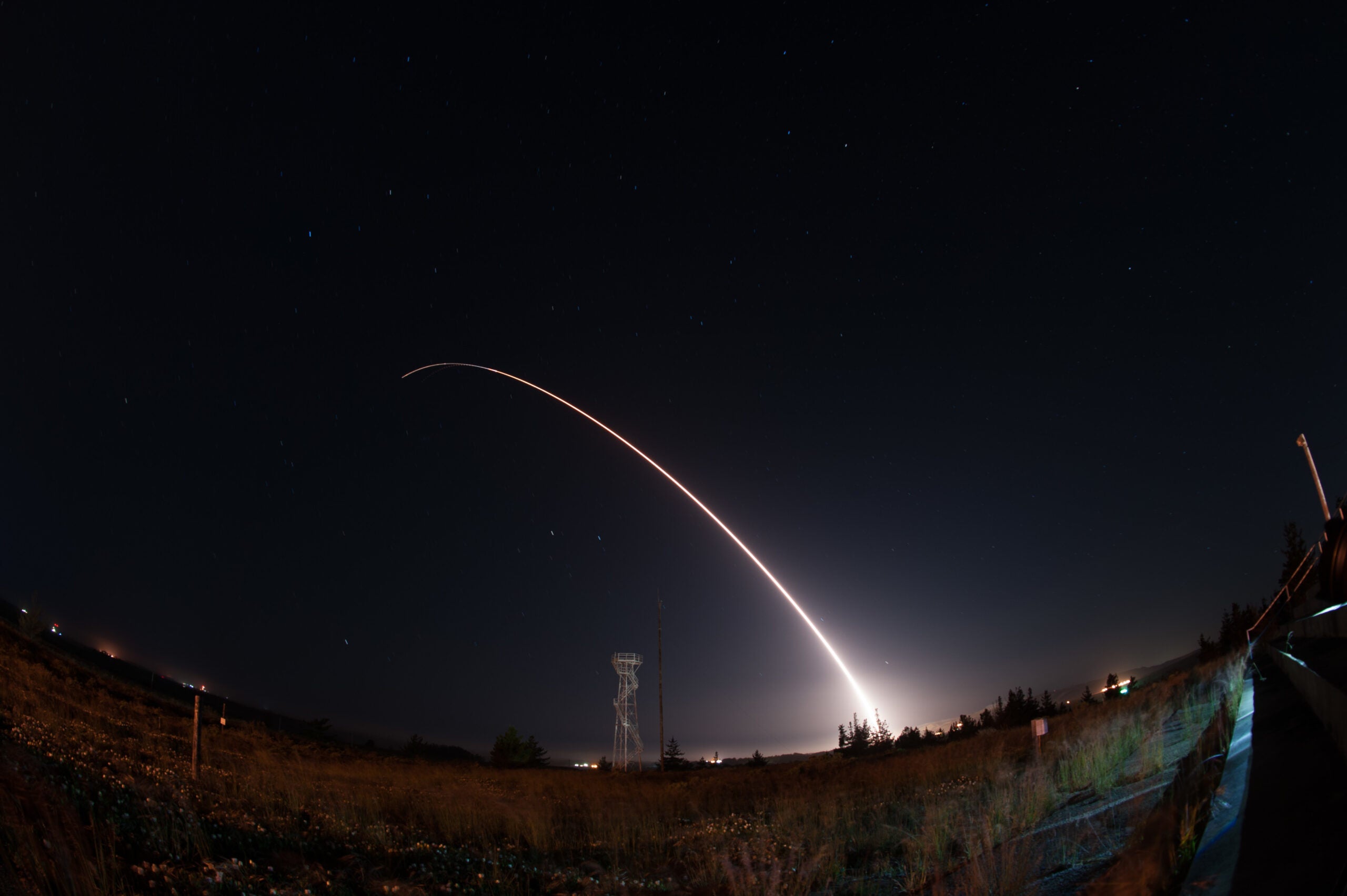
The contract covers the engineering and manufacturing development (EMD) phase of the GBSD programme. Spanning over eight years it will cover ‘weapon system design, qualification, test and evaluation and nuclear certification.’
Northrop Grumman became the lone bidder for the GBSD programme after Boeing dropped out last year, following Northrop Grumman’s acquisition of Orbital ATK. Boeing said that Northrop Grumman’s acquisition of Orbital ATK meant that the company would be able to offer a cheaper system and had earlier signalled its intention to not bid for the competition.
The resultant missile developed under the GBSD programme will replace the LGM-30G Minuteman III ICBM that first entered service in the 1970s. The GBSD ICBM is designed to offer ‘increased accuracy, enhanced security and improved reliability’ broadening the US array of strategic nuclear options.
The finished missile is due to be deployed in the late 2020s. Northrop Grumman said it is aiming to achieve initial operating capability by 2029.
Officials from the US Strategic Command (STRATCOM) said the investment in GBSD would protect a ‘vital’ leg of the US nuclear triad, which also includes Submarine Launched Ballistic Missiles and strategic bombers.
US Defence Secretary Mark Esper said: “Modernizing the nuclear strategic triad is a top priority of our military, It’s key to our nation’s defence. It provides that strategic nuclear deterrent that we depend on day after day – that we’ve depended on decade after decade.”

US Tariffs are shifting - will you react or anticipate?
Don’t let policy changes catch you off guard. Stay proactive with real-time data and expert analysis.
By GlobalDataUS Air Force Global Strike Command commander General Tim Ray said: “I am fully confident in the evolutionary warfighting effectiveness GBSD will ensure, We are leveraging stable requirements, modern technology, we own the technical baseline, and have a modular design to keep the program rapid, relevant and affordable.
“The increased accuracy, extended range and improved reliability will provide the United States a broader array of options to address unforeseen contingencies, giving us the edge necessary to compete and win against any adversary.”
The EMD contract award follows a three-year technology maturation and risk reduction (TMRR) phase held under the GBSD banner. Northrop Grumman’s bid team includes Aerojet Rocketdyne, Collins Aerospace, General Dynamics, Lockheed Martin and L3 Harris along with a number of other industry partners.
Northrop Grumman chairman, chief executive officer and president Kathy Warden said: “Our nation is facing a rapidly evolving threat environment and protecting our citizens with a modern strategic deterrent capability has never been more critical.
“With more than 65 years of technical leadership on every ICBM system, our nationwide team is honoured and committed to continuing our partnership with the US Air Force to deliver a safe, secure and effective system that will contribute to global stability for years to come.”
Air Force Technology understands that over its lifetime the contract to update the USAF’s ICBM force could be worth up to $85bn.
Assistant secretary of the Air Force for acquisition, technology and logistics Dr Will Roper said: Across the Department of the Air Force, we are looking for opportunities to inject innovation into programs to stay ahead of our adversaries.
“Our GBSD team is doing just that by leveraging a modular open system approach to ensure our next generation ICBM system is adaptable to challenges posed by the pace of technological advancements and new threat environments.”
The USAF said that the programme advances the US ability to maintain a ‘robust, flexible, tailorable and responsive strategic nuclear deterrent’ that was fit for current and future threats.
Commander of Air Force Nuclear Weapons Center and Air Force program executive officer for strategic systems Brigadier General Anthony Genatempo said: “This contract provides the best overall value to the warfighter and taxpayers, The GBSD program is leveraging technologies to reduce the program’s technical risk and ensure time-certain delivery to meet the warfighter’s needs.
“Its acquisition strategy focuses on mature technologies, smart commonality, modular designs and maintaining the Air Force’s ability to leverage competition throughout the weapon system’s lifecycle to ensure it will effectively adapt to evolving environments.”



